Monroe Block Erasure
In 1852, Hiram R. Johnson began to finance the construction of a rather ambitious block of commercial buildings in downtown Detroit. People associated the "Johnson Block" more with the street it was on and eventually it became known as the "Monroe Block." Monroe extended eastward from Woodward's Campus Martius. Theaters, clothiers, hatters, hotels, restaurants, dentists, clothing makers, loan sharks and pawn shops were just some of the things operating on the street at one time or another. Hotels dominated the early decades and theaters were the rage later on, making it part of a theater district. The National Theater (built in 1913 on the next block and visible in some of the pictures below) remains abandoned but intact on the next block to the east, the only remaining testament to its theater district era. Through neglect, hatred, incompetence and other failures of society, much of the original Monroe block was beyond repair by 1990, when it was demolished. It was the last intact antebellum (pre-civil war) block of commercial buildings in Detroit.
For those not familiar with the oil-slicked parking lot now sitting where the "Monroe Block" once stood, here are some pictures:
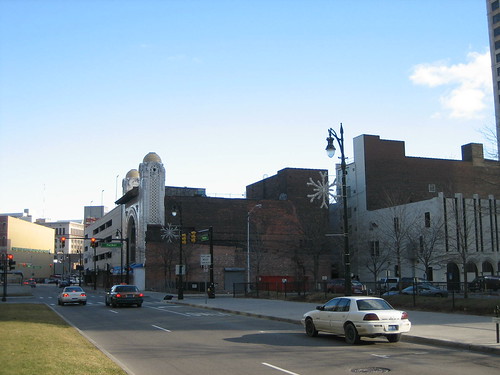
The National Theater (1914) still sits at the beginning of the next block.
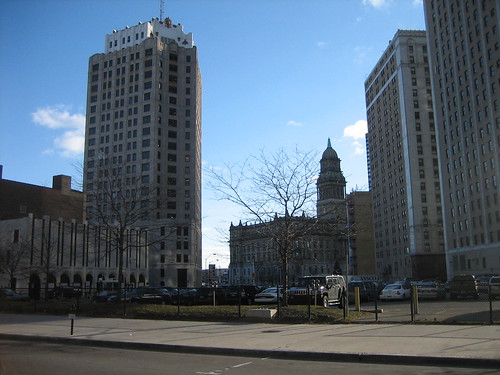
The Library of Congress has these amazing pictures of the now-erased Monroe Block to offer from throughout the 20th century:

1908
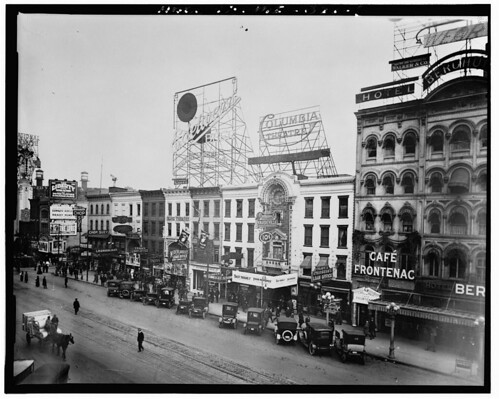
1913
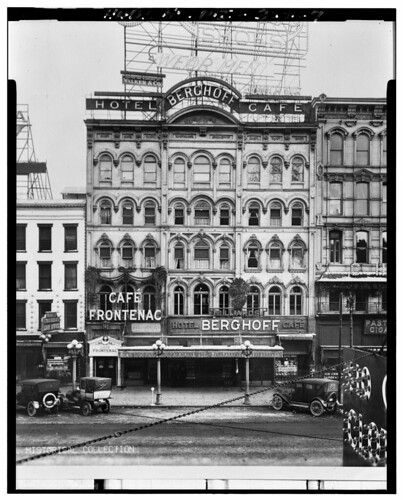
1915
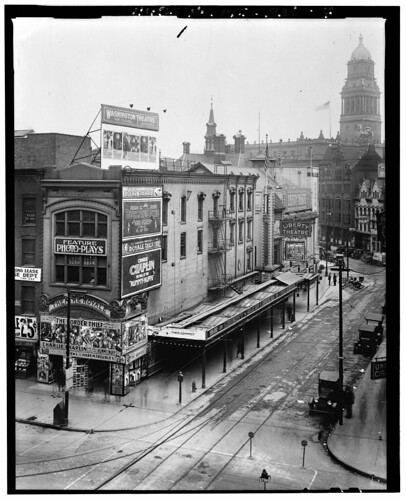
1917
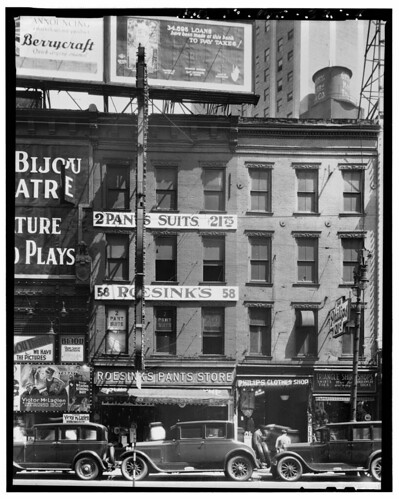
1929. Note that black and white people are photographed together.

1933
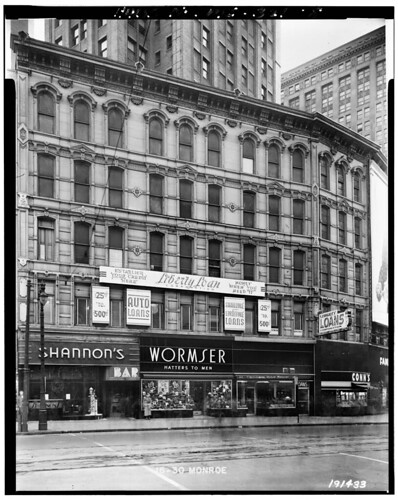
1951

1982.
Property neglect was in full swing by the time of the above photo. The rear corner of the building is visibly caving in. "Vagrants" or "thugs" are often blamed for much of the damage these buildings suffered. However, people only took what little was valuable from these buildings when sporadic, half-assed attempts by landowners at securing these buildings failed. Structures weren't being ripped apart for materials as commonly as has been the case more recently. Others label property-owners as the culprits. The proprietors of businesses in these buildings certainly did witness some of the deterioration, but often times those people were distinct from the building owners, who seem to be owed the most blame for the neglect, including the city's stewardship of the block after they acquired the buildings in the mid-1970s.
Preservation efforts were underway for roughly the same 15 years that the city owned the property and are cited as insufficient to save the block from destruction in this phenomenally researched article.
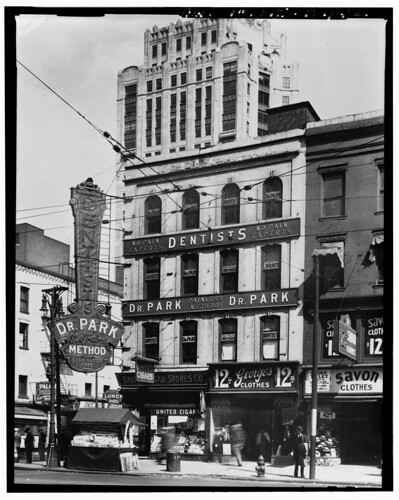
1930
The dentist's office was open from 1921 to 1978. "Dr. Park's Painless Method Dentists" practiced here over the tumultuous 1929-1932 period. In 1933, Dr. William Zieve began practicing there until he vacated the building in 1978. Inside the Dentist's office in 1982:
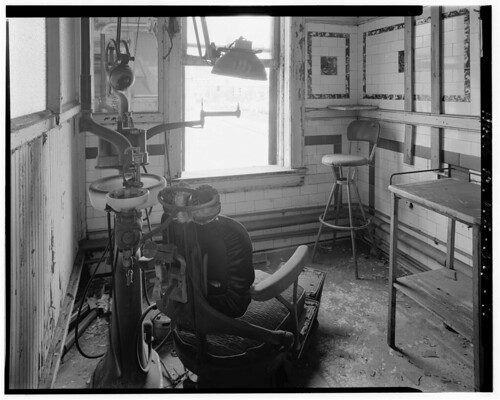
So, here again we have today's "Monroe Block." A simple, ground-level parking lot. The National Theater awaits it's death row appeal in the background. Some people ask me, "Why not make the National Theater a stage for the Hard Rock to have concerts?" The Marxist in me usually answers something about capitalism and "All that is solid melts into air," but I still hold out hope that some asshole with money (perhaps this SUV's owner) will realize the potential of that weird old theater over there.
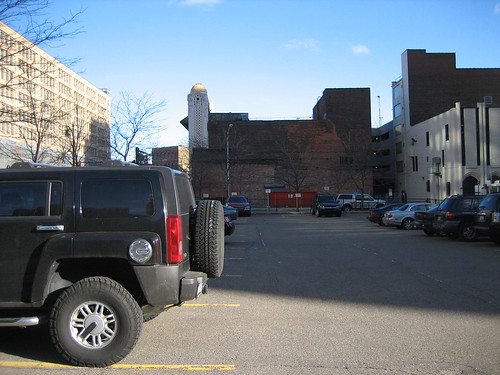
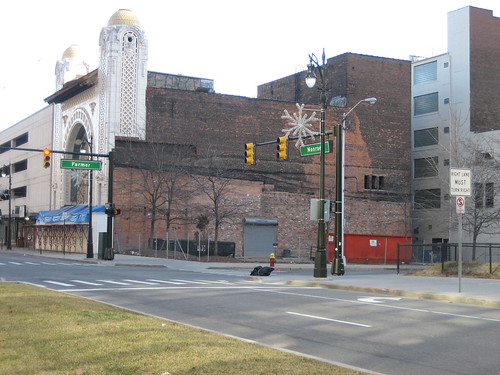
Next Post
Previous Post
For those not familiar with the oil-slicked parking lot now sitting where the "Monroe Block" once stood, here are some pictures:

The National Theater (1914) still sits at the beginning of the next block.

The Library of Congress has these amazing pictures of the now-erased Monroe Block to offer from throughout the 20th century:

1908

1913

1915

1917

1929. Note that black and white people are photographed together.

1933

1951

1982.
Property neglect was in full swing by the time of the above photo. The rear corner of the building is visibly caving in. "Vagrants" or "thugs" are often blamed for much of the damage these buildings suffered. However, people only took what little was valuable from these buildings when sporadic, half-assed attempts by landowners at securing these buildings failed. Structures weren't being ripped apart for materials as commonly as has been the case more recently. Others label property-owners as the culprits. The proprietors of businesses in these buildings certainly did witness some of the deterioration, but often times those people were distinct from the building owners, who seem to be owed the most blame for the neglect, including the city's stewardship of the block after they acquired the buildings in the mid-1970s.
Preservation efforts were underway for roughly the same 15 years that the city owned the property and are cited as insufficient to save the block from destruction in this phenomenally researched article.

1930
The dentist's office was open from 1921 to 1978. "Dr. Park's Painless Method Dentists" practiced here over the tumultuous 1929-1932 period. In 1933, Dr. William Zieve began practicing there until he vacated the building in 1978. Inside the Dentist's office in 1982:

So, here again we have today's "Monroe Block." A simple, ground-level parking lot. The National Theater awaits it's death row appeal in the background. Some people ask me, "Why not make the National Theater a stage for the Hard Rock to have concerts?" The Marxist in me usually answers something about capitalism and "All that is solid melts into air," but I still hold out hope that some asshole with money (perhaps this SUV's owner) will realize the potential of that weird old theater over there.


Next Post
Previous Post
Labels: Architecture, City Planning, Detroit, Erasure, History
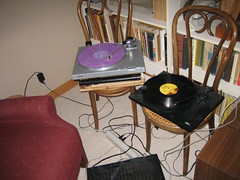

0 Comments:
Post a Comment
<< Home